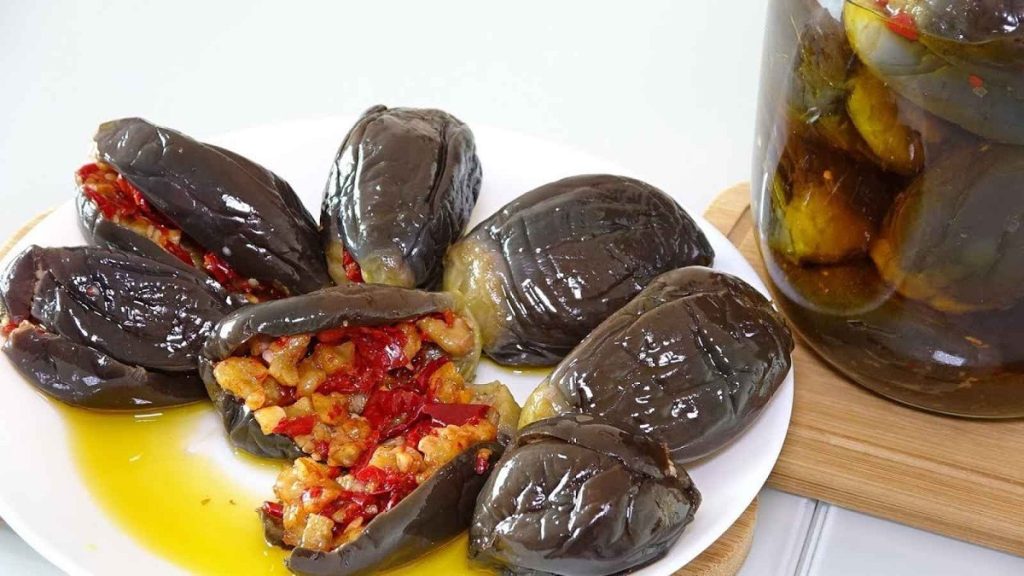Makdous is a quintessential Syrian dish, deeply rooted in Levantine culinary heritage. Originating in the Syrian region, especially Damascus and surrounding areas, it is traditionally prepared in autumn when fresh vegetables are plentiful, to be enjoyed throughout the winter. This preservation method reflects a centuries-old practice of storing seasonal produce for the colder months.
What is Makdous?
Makdous consists of small, round, local eggplants — known as “baladi” eggplants — stuffed with a savory mixture of walnuts, red pepper, garlic, and salt. Once prepared, they are submerged in rich olive oil, which acts both as a preservative and flavor enhancer.
Ingredients for Authentic Syrian Makdous
-
Baby Eggplants (Baladi) – small, round, and ideal for stuffing.
-
Filling – a blend of crushed walnuts, red pepper (sweet or hot depending on preference), garlic, and salt.
-
Olive Oil – used generously for preserving and adding depth of flavor.
Step-by-Step Preparation
-
Preparing the Eggplants:
The eggplants are boiled until tender, then slit open and salted to draw out excess moisture. -
Making the Filling:
Walnuts, red pepper, and garlic are finely chopped and mixed with salt to create a rich, aromatic paste. -
Stuffing:
The filling is carefully packed inside each eggplant. -
Jar Preservation:
The stuffed eggplants are arranged tightly in glass jars and completely covered with olive oil. -
Maturation:
The Makdous is left to rest for several days to absorb the flavors, achieving its signature taste.
Nutritional and Cultural Significance
Makdous is not just an appetizer; it’s a nutrient-rich food. Eggplants provide potassium and fiber, walnuts offer healthy fats and antioxidants, garlic boosts immunity, and red pepper adds vitamin C. In Syria, serving Makdous at breakfast or dinner is a sign of hospitality and tradition, making it an inseparable part of the Syrian winter pantry.

